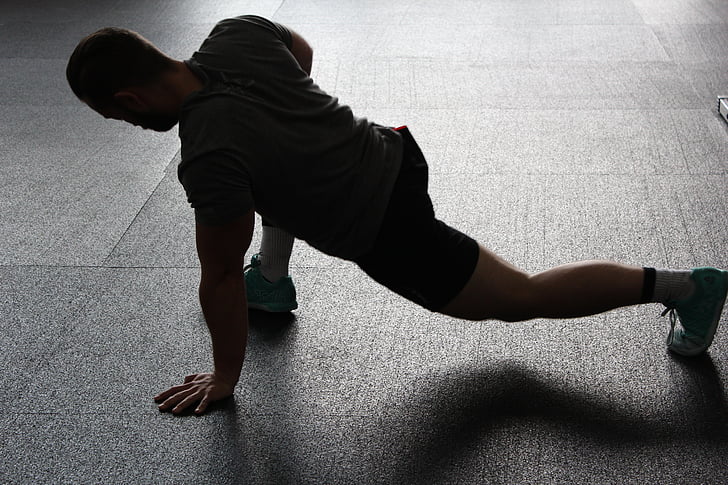Welcome to a journey into the dynamic world of stretching! In the quest for fitness and flexibility, we often turn to static stretching as a go-to solution. However, in this blog, we’ll reveal why you shouldn’t do it. Uncover its drawbacks, from flexibility limitations to potential negative impacts on performance. There may be other stretching options that would work best for you — read on to find out!
Static Stretching Explained
Static stretching means holding a muscle or muscles in one position for a while. It’s used before workouts, thinking it improves flexibility and helps avoid injuries. Yet, insights shed light on its potential drawbacks. One key limitation is its effectiveness in improving flexibility. Studies suggest it may not be as beneficial as once thought.
Static stretches before intense activities may also briefly decrease muscle strength and power. This can have a significant impact on your overall performance. Realising these downsides encourages us to rethink static stretching in our workouts. Other methods, such as dynamic stretching, might be a better way to warm up your muscles.
Why You Shouldn’t
Static stretching before workouts isn’t always recommended due to several factors. First, it can temporarily reduce muscle strength and power. This is particularly the case for impacting activities that require explosive movements. Take, for instance, box jumps, sprinting, and weightlifting exercises like power cleans.
Moreover, holding static stretches for too long may hinder optimal muscle activation. As mentioned, this can affect your performance. It might not prepare your body for the specific demands of certain exercises. This can also potentially increase the risk of injury. Unlike dynamic stretching, static stretching may not offer immediate flexibility gains, to add. This makes it less suitable as pre workout stretches.
Static stretching still holds value for post-workout flexibility or dedicated sessions. Even so, it’s essential to choose the right warm-up method based on the nature of your physical activities. To optimise your warm-up, consider incorporating dynamic stretches that involve controlled, active movements. This alternative helps increase blood flow and activate muscles. What’s more, better prepare your body for the workout ahead!
Common Misconceptions
Let’s dispel the myths surrounding static stretching and clarify when it’s suitable. A common misconception is that static stretching always boosts performance. However, studies show it may not be the best warm-up for everyone. Static stretches can increase flexibility with time, but research suggests otherwise. They conclude they might not be the most effective choice before certain activities. It’s crucial to understand that static stretching doesn’t work the same for everyone.
The Science Behind Dynamic Stretching
Dynamic stretching is about moving your muscles actively through their full range. This is where it differs from static, where you stay in one position. For dynamic, the stretches are continuous and imitate the movement you’ll do in your next move.
Scientific studies support the benefits of dynamic stretching, including:
- improved flexibility
- increased muscle temperature
- enhanced joint range of motion
Dynamic stretching activates muscles and boosts blood flow, promoting better physical performance. Unlike static, dynamic stretching is linked to improved muscle power, agility, and speed. It works well as a warm-up for sports and intense workouts that involve dynamic movements.
Incorporating dynamic stretching into your routine can optimise your warm-up. It may boost performance and lower the risk of injuries linked to static stretching.
Benefits of Dynamic Stretching
Dynamic stretching is essential for a balanced fitness routine, providing key benefits. Performing this stretch actively moves muscles through different patterns. In return, it significantly boosts flexibility and improves the overall range of motion. This makes it an excellent choice for those looking to enhance flexibility gradually.
Next, dynamic stretching plays a key role in activating muscles. This activation primes your muscles for the upcoming activity. The dynamic nature of these stretches helps engage the muscles dynamically. Overall, this translates to better readiness for physical exertion.
Finally, dynamic stretching is a useful tool for preventing injuries and warming up. It gradually raises the heart rate, sends blood to the muscles, and helps lubricate the joints.
This preparation readies the body for intense physical activities. What’s more, lowering the risk of strains, sprains, and other injuries. Including it in your routine enhances the effectiveness and safety of your simple exercise routine.
Is Static Better Than Dynamic?
The debate over static vs dynamic stretching depends on when and how you use them. Static stretching is great for long-term flexibility and works well in post-workout sessions. Yet, when gearing up for activities that need explosive moves, the dynamic is the go-to choice.
Timing and your specific exercise goals determine which method to use. You may consider incorporating both into your routine. This means using dynamic stretches for warm-ups and static stretches for cool-downs. This way, you get the best of both worlds, creating a balanced and effective fitness regimen.
Round-up
Static stretching may not be the best choice for every situation. While it helps with long-term flexibility, its limitations before certain activities are important. It temporarily weakens the muscles and doesn’t immediately improve flexibility. Considering these, it’s wise to rethink static stretching in your warm-up routine.
Opting for dynamic stretching proves more versatile. For one, it actively prepares your muscles for different movements. Finding a balance between static and dynamic stretching ensures a comprehensive approach overall.
Enhance your stretching routine with a quality exercise mat. Get them only at Physioroom for comfort and support. Elevate your fitness experience today!
Up next on your reading list: How to Stretch Your Muscles Before a Workout: The Basics



 (
( (
( (
(